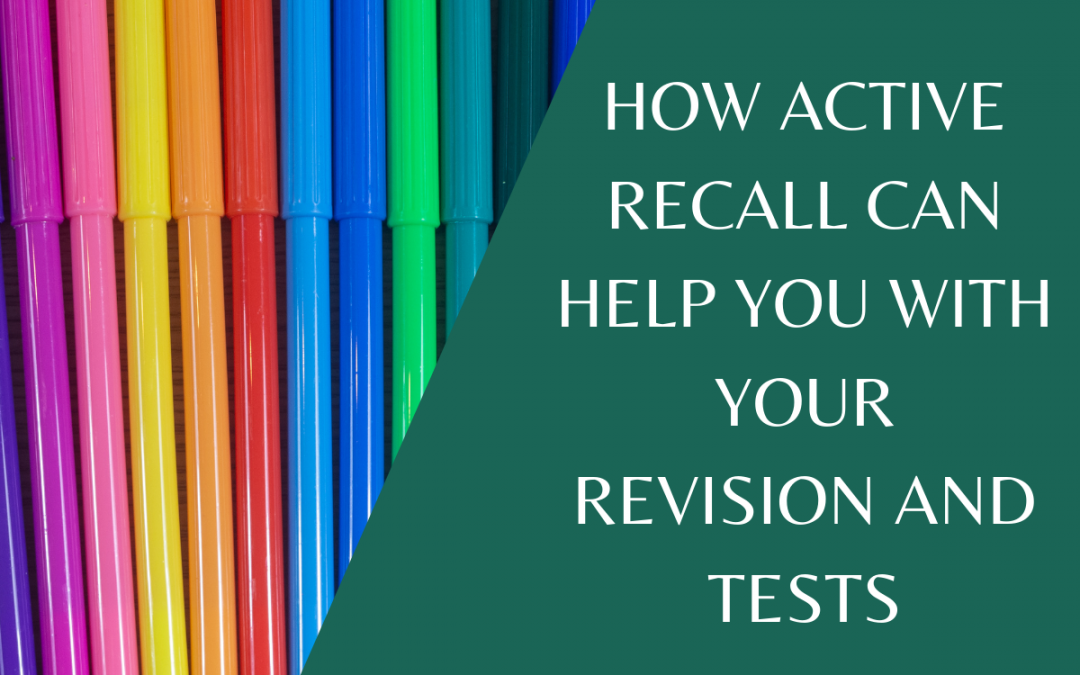Are you more of a reader or a writer when it comes to revision?
Do you know the best way to revise?
What would you recommend if someone asked you the best way to revise?
Over the years I have tried, and recommended, many revision methods myself and for my students. I always come to the same conclusion and that is the most successful method is being tested on a topic by someone else or completing practise questions.
💡 Different methods
Traditionally many students revise by reading over their notes, highlighting keywords and making diagrams/mind maps or flow charts. We have all done it haven’t we? They may also throw in the odd practice question or even find time to make some flashcards (these are definitely useful!). Then there may be the odd question handed to us by our teachers for some practice but before we know it, the test is here and we have to just get on with it. After the last year, many students are concerned they are missing chunks of key information due to homeschooling and online lessons. Teachers tried their best but there is no substitute for face to face teaching. Hopeful these suggestions will help you get your revision on track so you can cover any tricky areas.
⚡️ What is Active Recall?
The method of active recall is where you choose a topic to focus on (it is best if it isn’t too broad), then either bullet point or summarise the key points. Next, you try to recall/rewrite what you have learnt. Initially, you can use your notes as a prompt where you get stuck, the aim is to be able to eventually write the points without your notes. The idea is that you recall more information on the selected topic each time you move away from your notes/revision book/youtube video. Hopefully, you can use the method each time you revisit a topic, leaving longer chunks of time between each revisit and see if you can recall more and more.
💡 How can I use Active Recall?
There are different ways active recall can be used.
Summarising a Topic
I would start with summarising a topic; taking notes from a textbook or video. You could also print or copy a diagram and then try labelling and annotating it with keywords and bullet point for that topic. For example, this works well with the diagram for how electricity is generated. You can label the stages and eventually build up sentences to describe what is happening. Then you can also add in the energy transfers that take place as additional revision. If this is hard, just start with keywords, then return to the textbook and focus on one part of the diagram, aiming to add one or two bullet points of detail without your textbook.
Another diagram this can work well for is the digestive system. Print off a copy of one and fill it out in stages. Firstly, label the organs and tissues and cells involved. Then add details for the main organs including their function. Finally include detail on the main enzymes. This would be a great revision activity to help cover cells, digestion and enzymes, especially if your upcoming assessments are at the end of Year 9. Each time you do this you are recalling the information rather than copying it.
Flashcards
Using active recall you can create flashcards and then additional resources to add further information to them. You then have a ready-made resource that you can use for quick revision whenever you need to. Just make sure you have checked that your cards and information is correct and as detailed as you need before relying on them. If you’d prefer you can purchase some ready-made ones. They are a great tool to have if you want to quickly test yourself or if you need someone to test you.
Practice Questions
Finally, and one of the most important methods is to complete practice questions AND mark them. This will help you interpret questions better and understand which scientific language is essential for each topic. For example with a question on particle theory, you need to include energy, movement, forces and arrangement. Once you have this sorted no matter how a question is phrased it should be easier to recall the answer and explain it correctly without waffle! On certain topics, there are only so many ways questions can be phrased – in particular, diagrams. So once you have completed a few you will become more confident and used to what is being asked. It is essential that you mark it strictly against the mark scheme. Don’t just think oh that is enough, or think that’s what the mark scheme means. You will see on marked exams there are words that you MUST include and words that are labelled DO NOT ACCEPT. If you include a do not accept answer it usually results in no mark for that part of the question. There are many great resources available, but do ask your teachers for practice questions and remember the revision guides, workbooks and the internet have plenty of practice questions for you to try.
Hopefully, this gives you an idea of how Active Recall can help you and make your revision more effective for you. It will help with your overall KS3 science understanding. Do remember if there is a topic you are struggling with then YouTube is a great resource as are your teachers (so do ask them for help and ideas). We are regularly adding mini lessons to our YouTube channel and these will be a great tool to help you revisit a topic and makes a nice change from reading a textbook or revision guide. Take a look here and make sure you have subscribed to the channel.
Do get in touch if you have any questions or would like some help with your KS3 Science learning to fill in any knowledge gaps you have.
KEEP UP TO DATE - DON'T MISS OUT!
Our regular newsletters are filled with helpful and interesting information to help you with your Science at school

